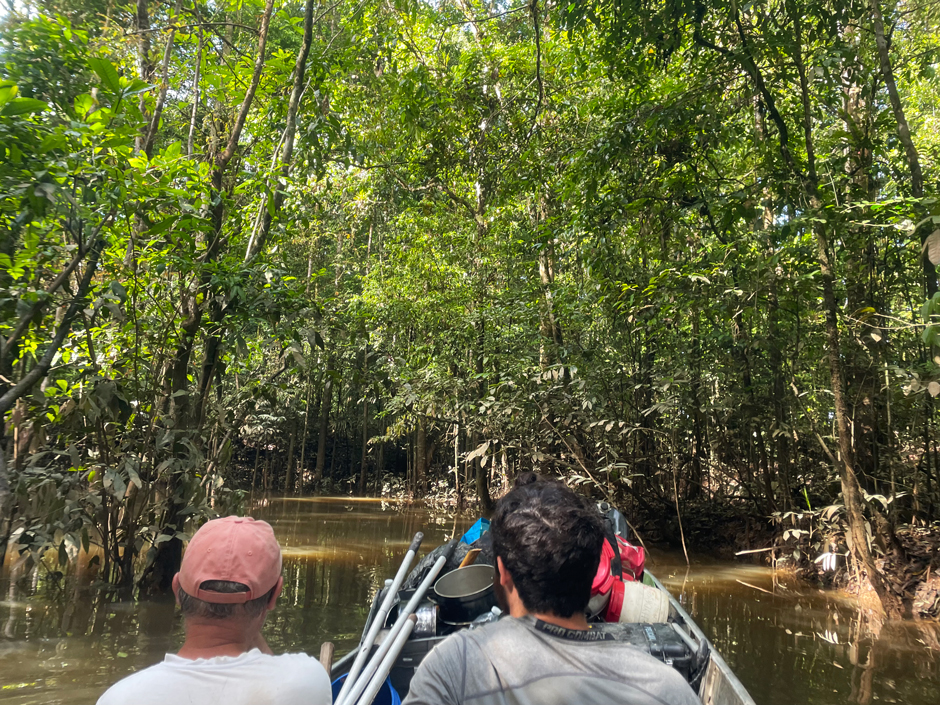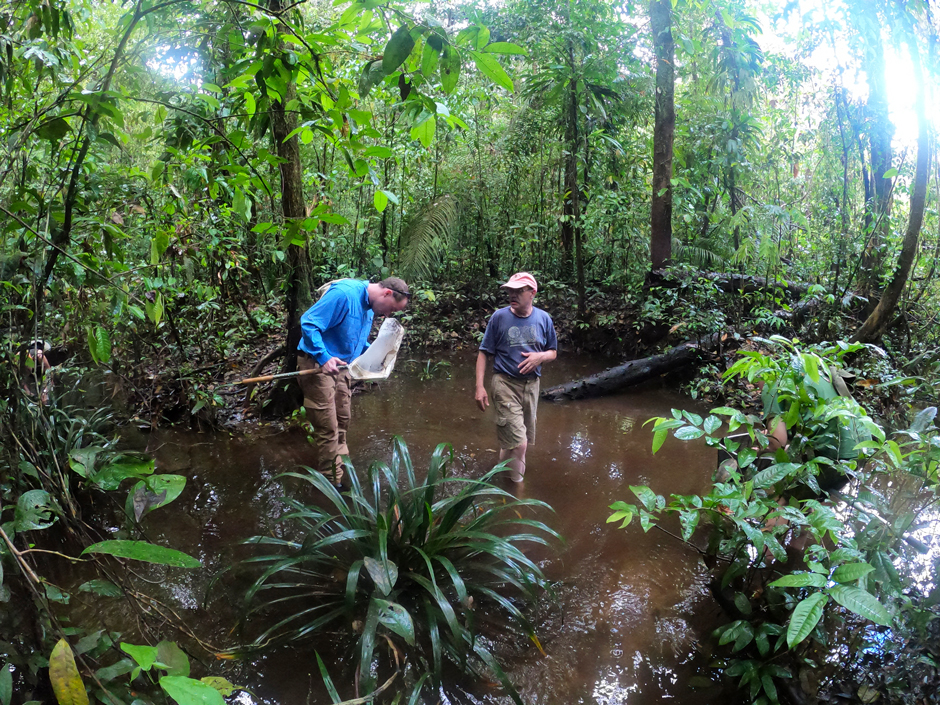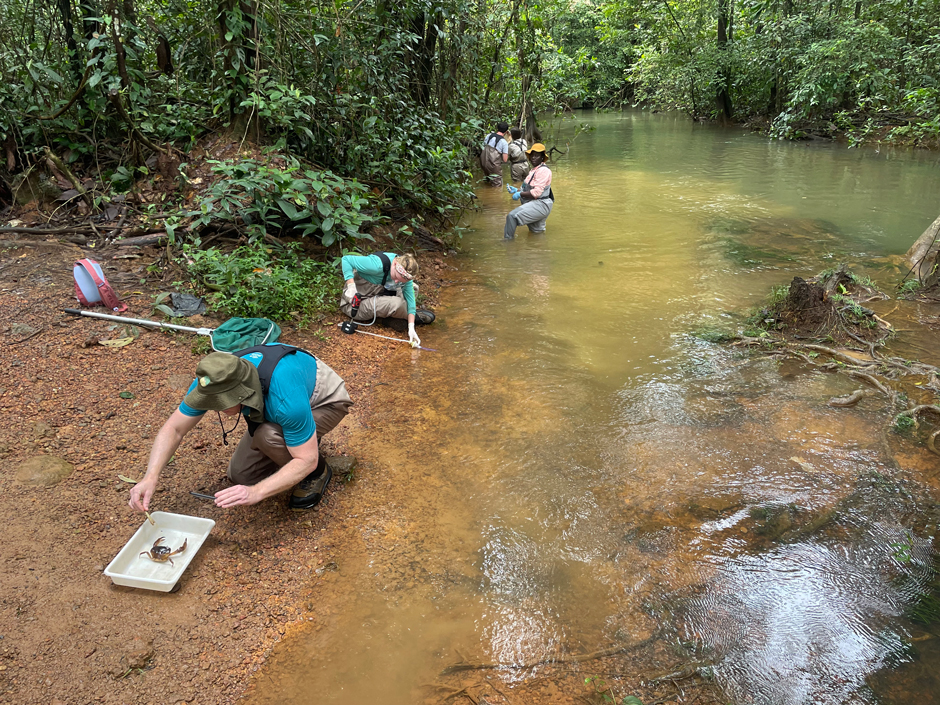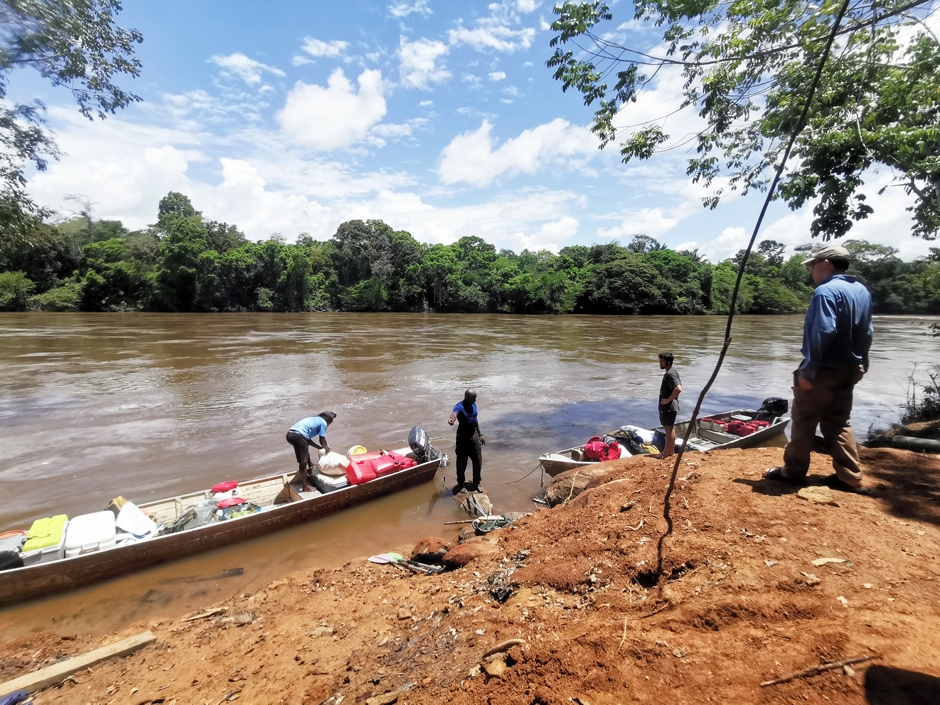Microbes and Human Health: Aquatic Microbial Communities May Hold Clues about How Deadly Pathogens Spread
 Entering some of the riverine wetlands of the Sinnamary River that are only accessible by boat. (Credit: Eric Benbow)
Entering some of the riverine wetlands of the Sinnamary River that are only accessible by boat. (Credit: Eric Benbow)Aquatic ecosystems are incredibly complex, with many different biotic and abiotic factors constantly interacting. Microbial communities are a key part of aquatic ecosystems, involved in the constant flow of energy and recycling of organic matter, according to Science Direct. The true scope of microbial community impacts on aquatic ecosystems is still not entirely understood. Eric Benbow, a professor of community ecology at Michigan State University, is exploring how microbial communities and pathogens may be negatively impacting human health, and how a changing climate could worsen this problem.
How Do Pathogens Arise?
Benbow, along with his students and colleagues, are studying a realm of community ecology that is still relatively unknown. “We’re really trying to bring in the microbes within that larger network of organisms,” explains Benbow. “Because I think if you start looking at the literature, we’re finding that microbes likely drive a lot of processes in ways that we never understood.”
Benbow has done work around the world in countries such as Ghana, French Guiana, and others where unstable ecosystems have led to harmful disease outbreaks. Pathogens entering new ecosystems find varying degrees of success based on the conditions present when they arrive. Benbow explains how microbes can enter a community and immediately become extinguished, may persist for a time but eventually disappear, or may stay around longer.
When non-indigenous pathogens stick around in an ecosystem, they have the opportunity to start negatively affecting its structure. This can occur through resource competition that leads to pathogens outcompeting native species. This harmful restructuring of aquatic ecosystems can cause pathogens to act as invasive species. Benbow hypothesizes that when pathogens become this abundant, humans may come in contact with them and contract diseases that otherwise would not have been found in these bodies of water.

Collecting macroinvertebrates in a small river of the Approuague River, French Guiana. (Credit: Eric Benbow)
Changing Abiotic Conditions
When native macroinvertebrates and microbes exist in healthy aquatic ecosystems, they efficiently occupy their niche and often prevent invasive pathogens from entering the ecosystem. Benbow wants to know what is changing in these aquatic ecosystems that allow pathogens to take hold and increase sufficiently enough to harm human populations.
The answer, he hypothesizes, lies in the water’s abiotic conditions. “The abiotic conditions of the water quality are the habitat template from which you have to start,” explains Benbow. “If you understand how one water quality variable really changes the community, like dissolved oxygen, for instance, you can predict how that’s going to affect which community members can be in a certain location.”
Previous projects done by Benbow and his students have explored this question, manipulating the absence or presence of certain macroinvertebrate species and then observing how pathogens respond to these changes. However, they have taken this a step further, now comparing this absence and presence effect of the microbes of aquatic ecosystems to pathogen growth. Benbow believes there is a possibility that macroinvertebrates do not have a significant impact on pathogen presence–instead, microbial communities are reacting to changing abiotic conditions, which may open the door for pathogens to enter the ecosystem.
“So maybe it has nothing to do with the macroinvertebrate changes, but the microbes associated with plant biofilm, microbes associated with periphyton, or epilithic communities on rocks,” Benbow said. “But the abiotic conditions are such that a community member is no longer there, or it’s in reduced population numbers so that now this novel genome can get in and take hold and start to persist and start to replicate.”

The research team doing a standardized sampling of fish, macroinvertebrates, suspended solids of the water column,
sediments and water quality conditions. (Credit: Eric Benbow)
The Effects of a Degrading Environment
Environmental change can affect many abiotic factors, such as temperature, sunlight, soil, and nutrient availability. Benbow also believes that microbial communities may also play an important role in regulating ecosystems’ health. “Microbes seem to have this unknown potential of importance to environmental condition,” says Benbow. “We’re in the process of figuring some of that out.”
However, microbes can still be negatively impacted by changes in aquatic ecosystem health if they are severe enough. Benbow believes invasive pathogens are able to enter and stake a claim in aquatic ecosystems when certain organisms that are in decline open up the door, and that worsening environmental conditions around the world will only exacerbate this problem.
“I think there’s little doubt that more extreme weather events are going to change ecosystems in ways that may allow certain species of human health importance to get in, persist and likely disperse,” says Benbow.
Along with the indirect effects of global warming, such as extreme weather, direct human impacts also cause problems for aquatic environments. Pollution, especially when it contains nitrogen and phosphorus fertilizer, creates runoff that leads to eutrophication in bodies of water. “There are examples out there that show that extreme weather events and flooding, combined with pollution can provide the circumstances where you get increased potential pathogens in aquatic ecosystems,” says Benbow.
Benbow gives the example of how in southern regions of the United States, where hurricanes lead to flooding, Vibrio vulnificus, a bacterial species that can transmit life-threatening diseases, may enter waterways and provide the means for infection in human populations that rely on those waterways. Studies have found that frequent flooding carries eutrophic waters, where Vibrio vulnificus thrives, closer to humans, and therefore increases the risk of infection.
Conclusion
The link between microbes, pathogens and environmental changes is still an area of study with many unknowns, but it’s one that may provide key insights into preventing harmful diseases from spreading. A documentary has been made that highlights Benbow and others working to understand and solve this issue.
Anthropogenic impacts are intricately tied to ecosystem health and have a major impact on the ecosystem services that humanity relies on. It is a continual reminder of the need to ensure constant and quality monitoring of aquatic ecosystems due to their widespread impacts on human health.

Preparations for traveling into the interior areas of the Mana River watershed for sampling (French Guiana). (Credit: Eric Benbow)




Pingback: Microbes and Human Health: Aquatic Microbial Communities May Hold Clues about How Deadly Pathogens Spread – Lab Theory